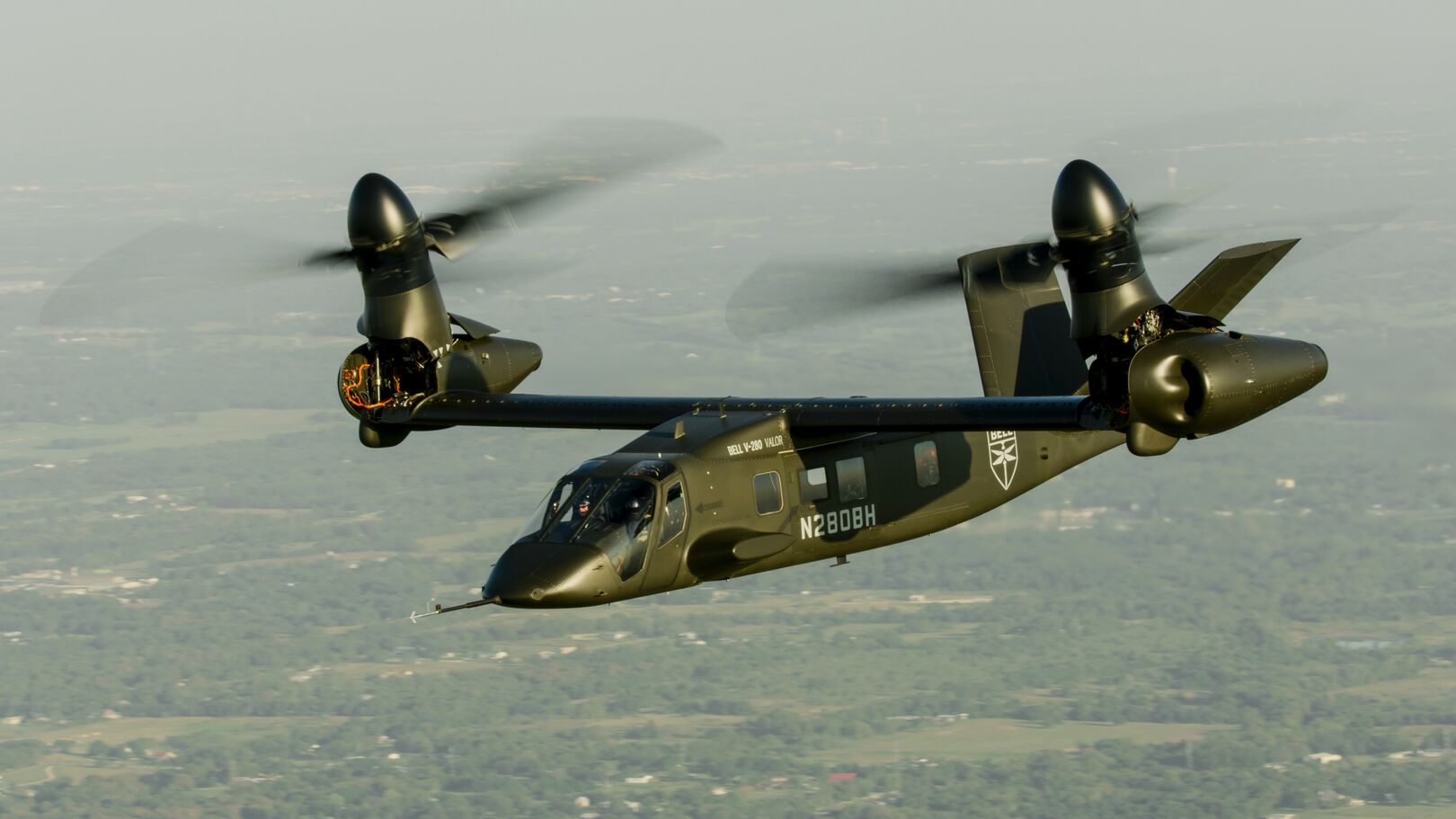
Shown here is Bell’s V-280 Valor tiltrotor that won the US Army’s Future Long-Range Assault Aircraft (FLRAA) competition. The service said it’s FY24 budget request will protect its modernization programs. (Bell)
WASHINGTON — Army leaders have protected their weapon modernization plans in the forthcoming fiscal 2024 budget request, but a senior official acknowledged today that later this decade it may become trickier to balance development and buying those weapons for soldiers.
The White House is expected to deliver its 2024 budget request to Congress next week, and details about the Pentagon’s portion of that package will likely trickle out over the following days and weeks. While specific budgetary decisions are under wraps for now, Army acquisition head Douglas Bush said the Army’s weapon procurement and research and development coffers “did well”.
“We found the resources to keep our modernization plan on track,” Bush said at a Center for a New American Security event.
“In 2024, I feel really good about the product we’re sending to Congress. Now, is it perfect? No…important trades had to be made,” he later added.
Over the past several years, service leaders unveiled and then moved ahead with a large-scale weapon modernization plan that includes an array of new, pricey capabilities like the Future Long-Range Assault Aircraft (FLRAA) and a Bradley replacement under the revamped Optionally Manned Fighting Vehicle program. While each initiative is on its own timeline, the service is bracing for the time to come when more and more of those weapons must cross the “valley of death” from research and development to procurement, and the Army actually needs to pony up more money to acquire and field them.
Bush said he is preparing for this budgetary challenge, but next year is not the critical point yet.
“The outyears of the [Program Objective Memorandum] POM, when you actually have some of these significant production ramp ups, sure there will be a tension there between [research and development] and pulling it over for procurement,” he added.
Although Bush steered away from discussing specific programs, he noted that next week’s budget request will include plans to move forward new multi-year munition production contracts — a move the service has clamored for in hopes of better stabilizing the long-term munition market.
Service acquisition officials have traditionally reserved the use of those types of contracts for larger ship and aircraft programs, but lawmakers expanded this power to include ammunition and launcher lines in the FY23 authorization bill, though contracts above the $500 million threshold still require appropriators’ approval.
Bush said the service plans to use that new authority to ink a “couple” new deals this year and will include two “big ones” in the FY24 budget request.
“In 2024, we’re going to present the Congress… with our plans for multi-years. We’re going to show savings. We’re going to show the benefits of stabilizing the industrial base for the munitions,” he told the audience.
“[There is always] tension between platforms and munitions [and] sometimes you have to choose one way or the other,” Bush later added. “Locking some of those down in multi-years will avoid that temptation and ensure that we have healthy production lines that could ramp up.”
Clearing smoke: Boeing swapping out AH-64E Apache generators, eyes new generator options
“We’ve seen some improvement … and so readiness is there: We have enough retrofit generators right now [and] it’s not impacting readiness,” said John Chicoli, the director of Boeing’s global services for vertical lift and special operations.


























